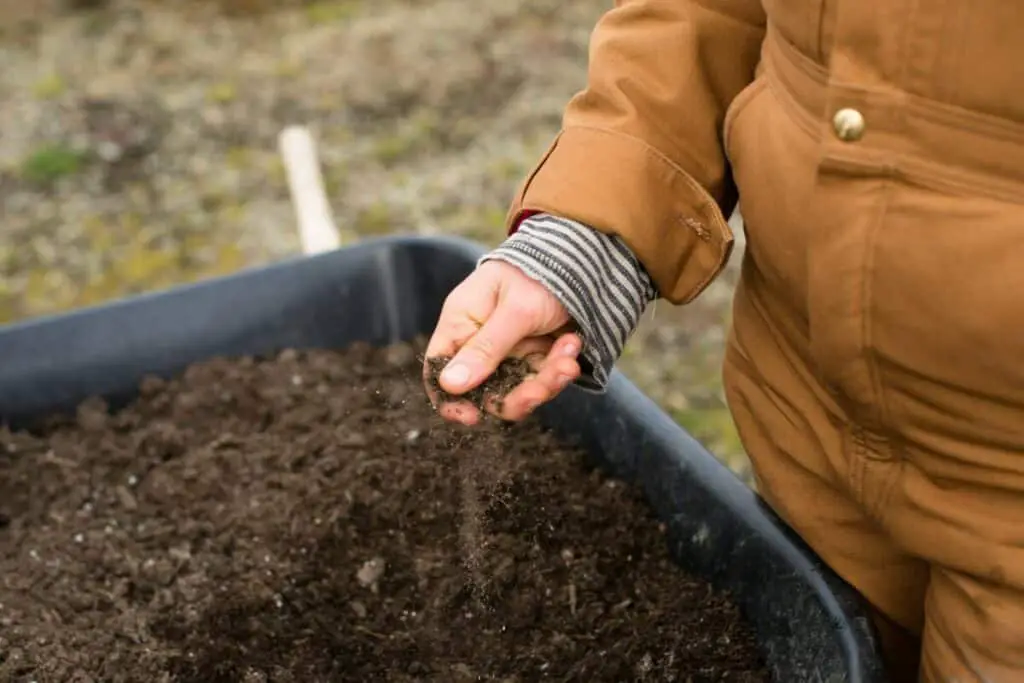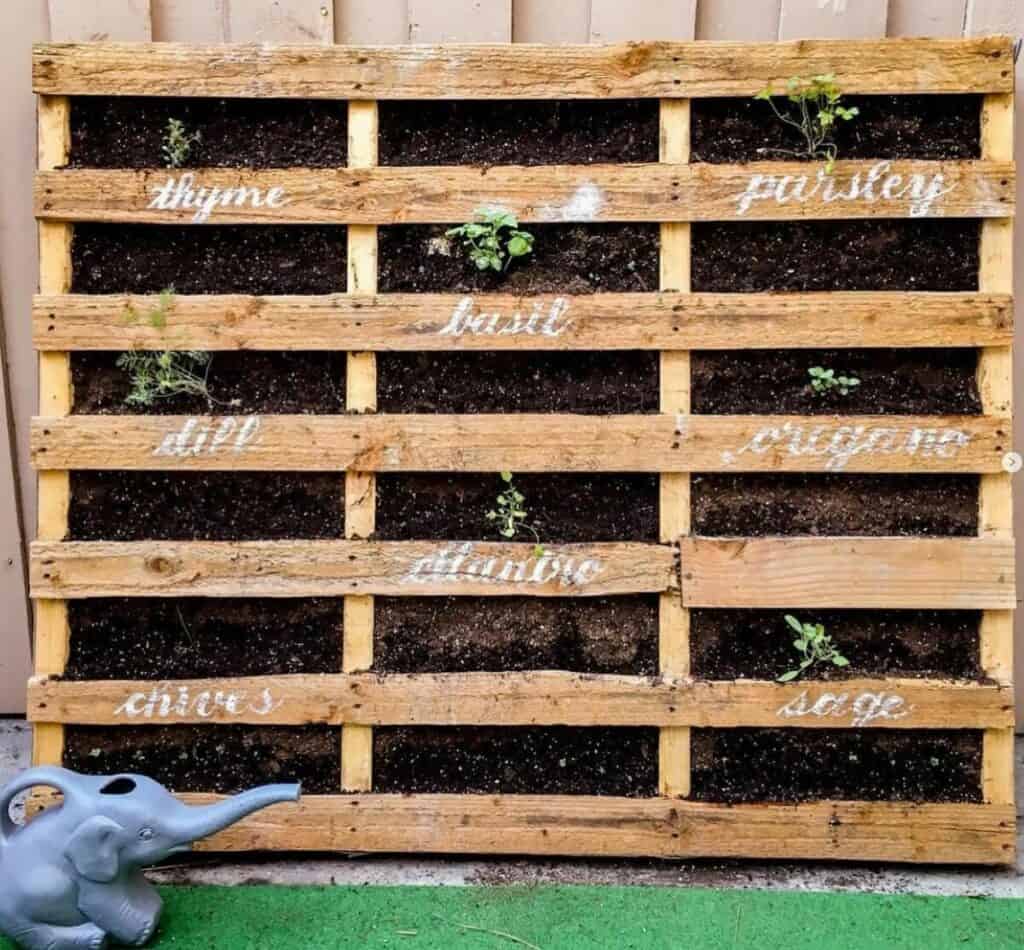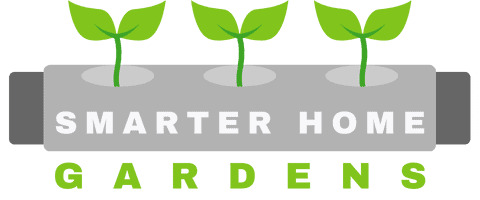
Choosing the right soil for your vertical garden, whether you are building a green wall or a simple container system, is one of the most important early decisions you can make on your vertical gardening journey. Walking into your local garden centre and being faced with hundreds of different brands can be daunting and confusing. But after a few successful seasons with my vertical garden, I think I can help.
As a general rule, good-quality loam-based potting soil is ideal for most vertical gardens. Potting soil is lightweight, has excellent drainage and is generally packed full of nutrients and minerals like perlite, bentonite and potassium which help to support young plants growing in containers.
In this article, I’ll cover a range of key considerations for choosing the best soil for your vertical garden. It may seem like a rival decision, but it’s actually really important and can make all the difference. Keep reading to find out more.
What to look out for when choosing soil?
So, we’ve established that good quality loam-based potting soil is generally the best soil to choose for your vertical garden. It’s great because it holds certain traits that chiefly benefit plants growing in pockets or containers, like those within most vertical gardens. But what precisely are the traits you should look for when choosing soil for your vertical garden? And why are they important?
1. Must have good drainage
Drainage is particularly important for plants growing in containers. Soils that contain high concentrations of sand, pebbles and other granules do not hold on to too much moisture and ensure that containers do not get water-logged. Water-logged soil is a leading cause of root decay. Potting soil, on the whole, has excellent drainage and is therefore a great choice for vertical containers. It’s also critical to ensure the container itself has an adequate number of drainage holes in the bottom.
2. Be lightweight
Soil weight is an important factor when growing plants vertically, particularly if your vertical garden is delicate. Choosing soil that is lightweight will make all the difference in protecting the structural integrity of your system and reducing physical strain. Potting soil is generally lightweight when compared with garden soil which makes it an ideal candidate for vertical gardens.
3. Allows for plenty of aeration
Potting mix is a fluffier growing medium than most garden soils like clay. Choosing soil that allows air to better penetrate the roots of your plants will help to oxygenate them and encourage healthier growth. It can also help to prevent mould and root rot.

4. Packed with nutrients and minerals
Particularly important when starting a new vertical garden with young plants, potting soil generally contains a high concentration of nutrients and minerals like perlite, bentonite, vermiculite, pumice and sand are specifically designed to support young, immature plants. I personally try to avoid potting soils that contain peat as they are more damaging to the environment.
5. Is produced organically and avoids synthetics
No matter if I am gardening vertically or horizontally I always choose organic soils and composts over synthetic ones. Organic potting soil is more expensive, but it is better for the environment, creates much tastier food and is generally better for your health.
Can’t I just use the soil from my own garden?
While you can technically use native soil for your vertical garden I don’t recommend it for a number of reasons. Firstly, potting soil is purpose-made for plants growing in pots, pockets and containers and holds all the traits needed to ensure healthy, productive plant growth.
Native soil, from under your lawn, for example, has not been created for this purpose and is likely to be free of certain minerals your plants need to grow successfully.
Furthermore, native garden soils are likely to be the wrong kind entirely. For example, the most common garden soil type is clay. Clay soils are very heavy and dense. They do not drain well which can lead to root rot and mould when used in containers. Additionally, in the warmer months, clay tends to dry out and contract which can constrict and even damage root systems.

While you may save some money by using any old soil from your garden you often do so at the expense of your plant’s health. Buying fertilizer to supplement the soil can help, but it isn’t usually enough to counter the other negative consequences listed above.
Treat yourself to some high-quality, loam-based potting soil which is cheap and effective. You won’t regret it.
Consider which plants prefer which soils
While you can’t go too far wrong with loam-based potting soil you should spare a thought for the type of plants you want to grow as different types prefer different soil traits. As a general rule, consider the following combinations for your vertical garden.
| Plant Type | Soil Preference | Recommended soil traits |
|---|---|---|
| Herbs | Herbs prefer well-drained, fertile soil with plenty of nutrients and organic matter. | Well-drained, loam-based potting soil. |
| Lavender | Poor, dry soils with low fertility and good drainage. | Chalky and alkaline potting soil. Avoid clay or anything too heavy. |
| Flowering plants | Most flowering plants prefer loose, well-drained soil with plenty of nutrients. | Well-drained, loam-based potting soil. |
| Vegetables | In general, vegetable soil should be well-drained and loose, containing lots of organic matter. | Avoid clay or anything too sandy. High-nutrient content. Mulch with plenty of organic material. |
| Leafy Greens | Well-drained, loose and nutrient-rich soil. | Well-drained, loam-based potting soil. |
But, I thought vertical gardens didn’t even need soil?
Well, that’s partly true. There are many different types of vertical gardens. Some forms of vertical gardening do not use soil in order to grow plants effectively. However, this article is focused on vertical container systems which (mostly) use soil as their primary medium in which to grow plants. These could be recycled bottles, pallets or just standard planters stacked above one another and filled with a small amount of soil.
Vertical garden systems that do not use soil usually leverage techniques like hydroponics or aeroponics where plants are supported by a soilless growing medium like rock wool.

How often should you replace the soil in your vertical garden?
As a general rule, you should replace the soil in your vertical garden every two years. Most commercial potting soils break down over 24 months. Retaining soil beyond this period means that plants may not receive the nutrients they need to continue to thrive.
It also depends on the general condition odd the soil in your vertical garden. Slower-growing plants tend to use up the soil nutrients over a longer period. Faster-growing plants on the other hand use up the soil much more quickly.
How can you tell when it’s time to replace the soil in your vertical garden?
There are a few tell-tale signs that can indicate the soil in your vertical garden containers needs to be replaced and refreshed.
- The plants in your vertical garden look tired, dry and unwell. This can be a sign that they are not getting enough nutrients from the soil.
- Water runs straight through the soil. If this happens, it can signal that there are no organic compounds left to retain the moisture.
- The soil looks discoloured and is hard to the touch. This is generally a sign that the soil is spent and needs to be replaced.
- Roots are protruding from the container’s drain hole. This can be a sign that your container is too small, or that plants are searching for nutrients they can’t find in the existing soil.
In summary
When choosing the right soil for your vertical garden you can’t go far wrong with good quality, loam-based potting soil. This soil contains the majority of traits that make it great for vertical container gardens. It is lightweight, drains well and is packed with nutrients.
However, before choosing your soil you should always consider the type of plants you want to grow. Not all plants like the same soil and you should try to tailor your soil choices to match their needs.
For a more in-depth look at vertical gardening, please check out my ultimate overview.
